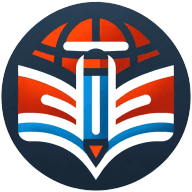4 Incorporating Personalized Learning in the Classroom: Advice for Teachers
Discover the transformative power of personalized learning in the classroom through this comprehensive exploration, featuring practical advice grounded in the expertise of seasoned educators and innovators. Uncover the impact of AI tools, adaptive pacing, and learning stations on student growth, tailored by an understanding of diverse student backgrounds. This article offers a blueprint for teachers seeking to optimize learning experiences and outcomes for every individual learner.
- AI Tools Enhance Personalized Language Learning
- Adaptive Pacing Tracks Tailor Student Experience
- Understanding Students' Backgrounds Guides Personalization
- Learning Stations Foster Individual Growth
AI Tools Enhance Personalized Language Learning
One way I'm incorporating personalized learning into my classroom is by using AI tools to give students more voice and agency in how they learn and demonstrate understanding. For over 7 years, I have been teaching students and educators about AI. With all of the tools available, it is important to help students understand how to use them to enhance learning. For example, students in my classroom use AI platforms like Curipod, Snorkl, School AI, or MagicSchool to enhance their language learning experiences. I create custom chatbots or speaking prompts to help students build confidence and comfort in speaking and for them to have more personalized experiences based on the feedback they receive and the adaptations the AI makes while working with the student.

Adaptive Pacing Tracks Tailor Student Experience
At Legacy Online School, personalized learning isn't an add-on--it's at our very core. One way we're excelling in this area is through adaptive pacing tracks. Each student is placed on a track--standard, accelerated, or extended--based on their performance during the first two weeks. We utilize early diagnostic scores, learning habits, and student feedback to recommend a pace that suits their individual learning style, rather than strictly adhering to their grade level.
However, the broader lesson here is that personalization isn't about giving students more choices--it's about providing them with the right choices. Offering too many options without proper support can lead to chaos. To address this, we assign each student a personal Learning Support Specialist who regularly checks in and helps refine the learning path as needed.
My advice to others is to start small. Fancy equipment isn't necessary--simply ask students one straightforward question: "Is this working for you?" and be prepared to adapt when the answer is no. Personalization begins with listening, not with high-tech gadgetry.

Understanding Students' Backgrounds Guides Personalization
As an English Language Development teacher, I've worked with students from diverse backgrounds with varying language needs. I recall a student who had just arrived from abroad, startled by the school bells, unfamiliar with push sinks, and without any experience using computers. Personalized learning was essential in helping him adapt to these new school norms and develop his English skills.
This experience highlights the importance of understanding each student deeply. My advice to educators is to gain a comprehensive understanding of your students by exploring their interests, cultural backgrounds, and language proficiency levels. This awareness enables educators to tailor their approach, meeting students where they are and ensuring equitable access to education.

Learning Stations Foster Individual Growth
Personalized learning has transformed the way I approach teaching, enabling me to cater to individual student needs while maintaining a cohesive class atmosphere. One effective strategy I've implemented is the use of learning stations, where students rotate between different activities tailored to their skills and interests. This allows them to engage with materials at their own pace, encouraging deeper understanding and sustained interest in topics they feel passionate about.
For educators looking to adopt personalized learning, my key piece of advice is to start small. Begin by incorporating elements that address diverse learning styles and then gradually integrate more complex adaptations, such as technology-assisted personalized assessments or flexible grouping. Remember, the goal is to make learning more accessible and enjoyable for everyone, so be patient and responsive to both the successes and the challenges.


